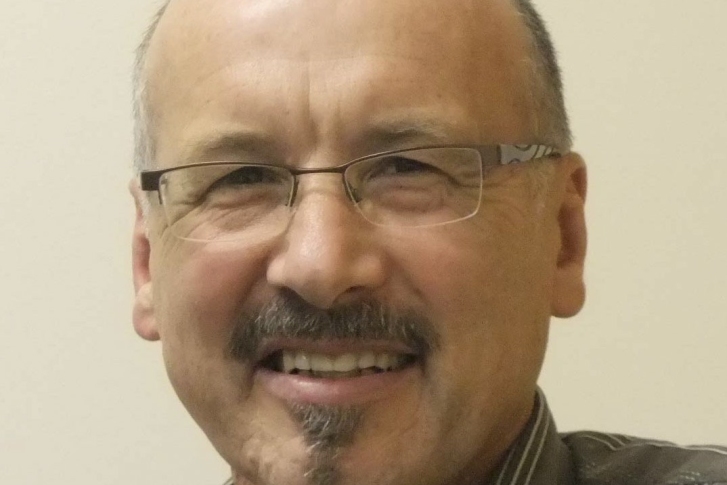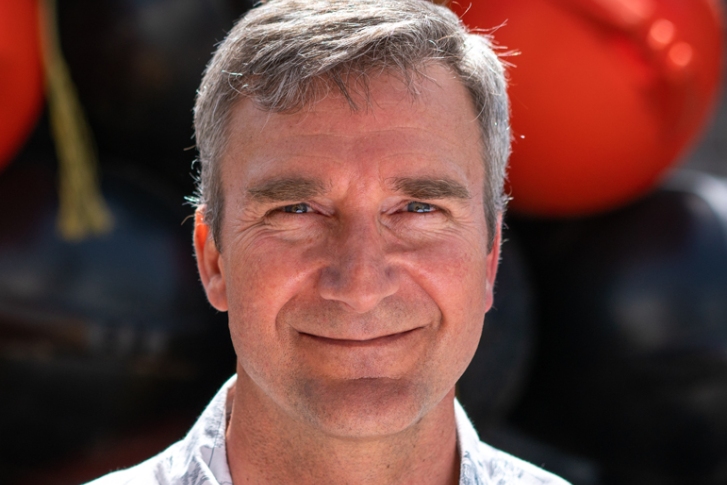Award-winning kina research
Top marks for NIWA scientist Phil James: in June he won the Agriculture, Forestry, and Fishing section of the MacDiarmid Young Scientists of the Year awards. His research has shown that holding kina (sea urchins) in sea cages with the right diet and handling can more than double the amount of roe they produce.
The yield of roe from kina caught in the wild is highly variable. On the domestic market, kina roe can fetch $70 per kg; so any way of increasing the yield per animal is important to the fishery, and is also environmentally beneficial.
With Phil’s method, wild-caught kina were held in sea cages in the cold waters of Mahanga Bay, Wellington, for ten weeks and fed a specially formulated diet to fatten them and improve their breeding condition. Half of the kina were fed in their cages underwater by divers and the other half were raised to the surface for feeding. This made no difference to the yield. Phil found, however, that the kina preferred a little wave action: kina in cages suspended from a mussel longline at 6 m depth produced 31% more roe than those in cages anchored to the seafloor.
Phil works at NIWA’s Mahanga Bay cold-water aquaculture facility. His research was funded by FRST in the 'Rapid Commercialisation of New Aquaculture Species' programme. NIWA will undertake further work on kina husbandry, artificial diet, and environmental effects in conjunction with commercial partners, including Sea Urchin New Zealand, Nissui, and Sealord.
For further information, contact: Dr Phil James
Wetland construction at Lake Okaro
Southeast of Rotorua, between the Waimangu thermal reserve and the township of Rotomahana, lies Lake Okaro. As part of an Environment Bay of Plenty programme to protect lakes from diffuse nutrient inputs, NIWA and Opus International Consultants have worked together to design and supervise construction of a treatment wetland for Lake Okaro.
Despite challenging weather conditions, construction of a 2.3 ha wetland to treat inflows to the northern end of the lake was completed in July. Our design required the excavation of an area of wet pasture on a nearby farm and part of a lakeside reserve to form a two-stage, serpentine wetland. Wildland Consultants will plant the wetland with native species over the coming spring.
The wetland is designed to filter incoming flows to the lake from the surrounding agricultural catchment, focusing primarily on removing nitrogen. We have incorporated sawdust from the Carter Holt Harvey Rainbow Mountain sawmill into the soils of the wetland to promote bacterial conversion of nitrates to nitrogen gas (denitrification). As the wetland plantings develop, they will provide a sustainable source of organic matter to fuel ongoing bacterial denitrification. Over the next few years, we plan to monitor the nitrogen removal performance of the wetland as vegetation establishes and the system matures. Information on performance will be used to corroborate performance estimates, and provide information on real development costs and benefits which can be used to encourage appropriate application elsewhere in the region. The wetland, which is part of a larger environmental programme, will also provide other benefits, such as wildlife habitat and landscape enhancement.
For further information, contact: Dr Chris Tanner.
Ecological engineers, mucking about on the seafloor
Burrowing heart urchins (genus Echinocardium) mix up coastal soft sediments. When they are abundant, they clearly affect the seabed’s appearance and composition.
NIWA scientists surveyed six sites in northern New Zealand and found a positive correlation between Echinocardium numbers and the abundance of microphytes, the microscopic plants which form the base of the sediment food web. (We can quantify this abundance by analysing the sediment’s pigment content.) Three short-term experiments showed how Echinocardium’s activities enhanced nutrient supplies and how the microphytes responded to these improved conditions by increased photosynthesis.
Although there was no increase in sediment pigment content in the short-term experiments, we predicted an increase over a longer period. This was confirmed when we ran a year-long follow-up experiment using different densities of Echinocardium on the seabed. Over the course of the experiment, heart urchins also reduced the abundance and diversity of other sediment-dwelling animals, such as polychaete worms and crustaceans, presumably because of the continual destabilisation of the sediment. Many of these sediment-dwellers graze on microphytes.
The response of species to pervasive environmental threats is important, especially for species like burrowing heart urchins that make major contributions to ecosystem structure and function. Heart urchins are susceptible to several types of broad-scale disturbance, including commercial trawling, and our research linking Echinocardium to productivity and biodiversity in coastal soft sediments highlights some of the potential ramifications of seabed disturbance.
Future work, supported by MFish and FRST, will be directed at measuring the contribution of Echinocardium to plant and animal productivity, with the aim of better predicting the effects of broad-scale marine ecosystem disturbances.
You can read more about heart urchins in ‘Burrowing by heart urchins: an important function in soft-sediment ecosystems’ (W&A 11(4)) and more about ecological engineers in this issue.
For further information, contact: Dr Drew Lohrer
French Polynesia at Bream Bay
Senior members of the government of French Polynesia visited NIWA’s Bream Bay Aquaculture Park in July to discuss how economic growth can be achieved through the development of new aquaculture species.
The delegation included the Minister of the Sea, the Honourable Keitapu Maamaatuaiahutapu, who was impressed by the variety of aquaculture developments at the site. Pearl farming and prawn farming are two important economic activities in French Polynesia. However, the government is keen to diversify, and fish farming is of particular interest.
NIWA’s Bream Bay facility has been working on techniques for the culture of a number of new fish species for New Zealand, including kingfish, yellow-belly flounder, New Zealand eels, and groper. As Andrew Jeffs explained to the visitors, economic research and experience in New Zealand have shown that the introduction of new aquaculture species can result in exponential growth of economic returns. Part of NIWA’s aquaculture strategy is to further these growth opportunities by demonstrating the viability of new species such as kingfish.


